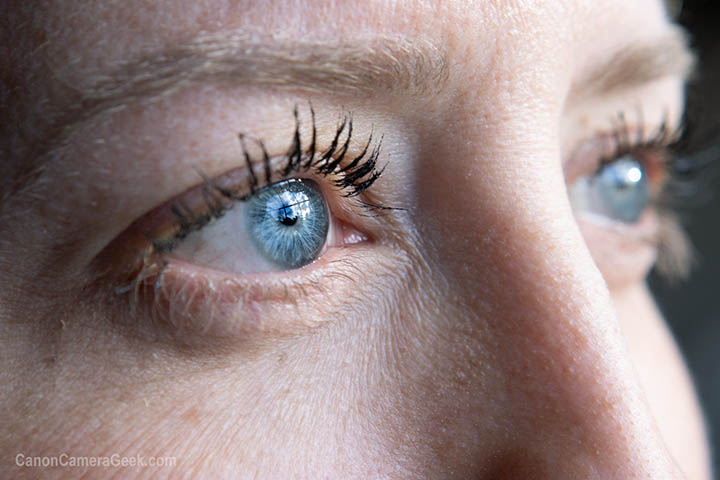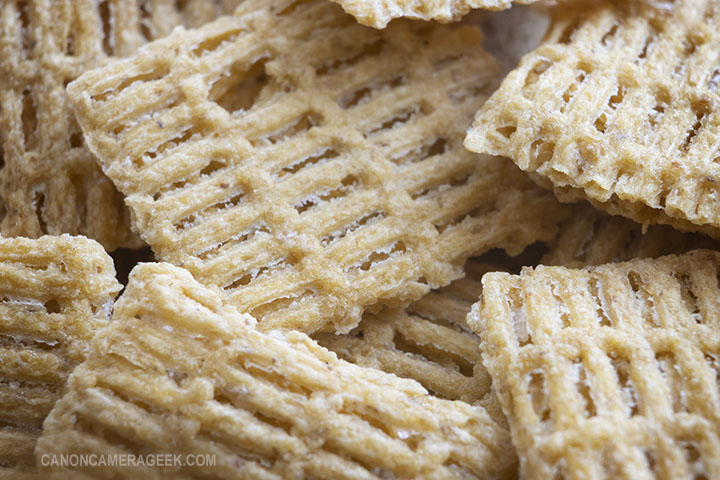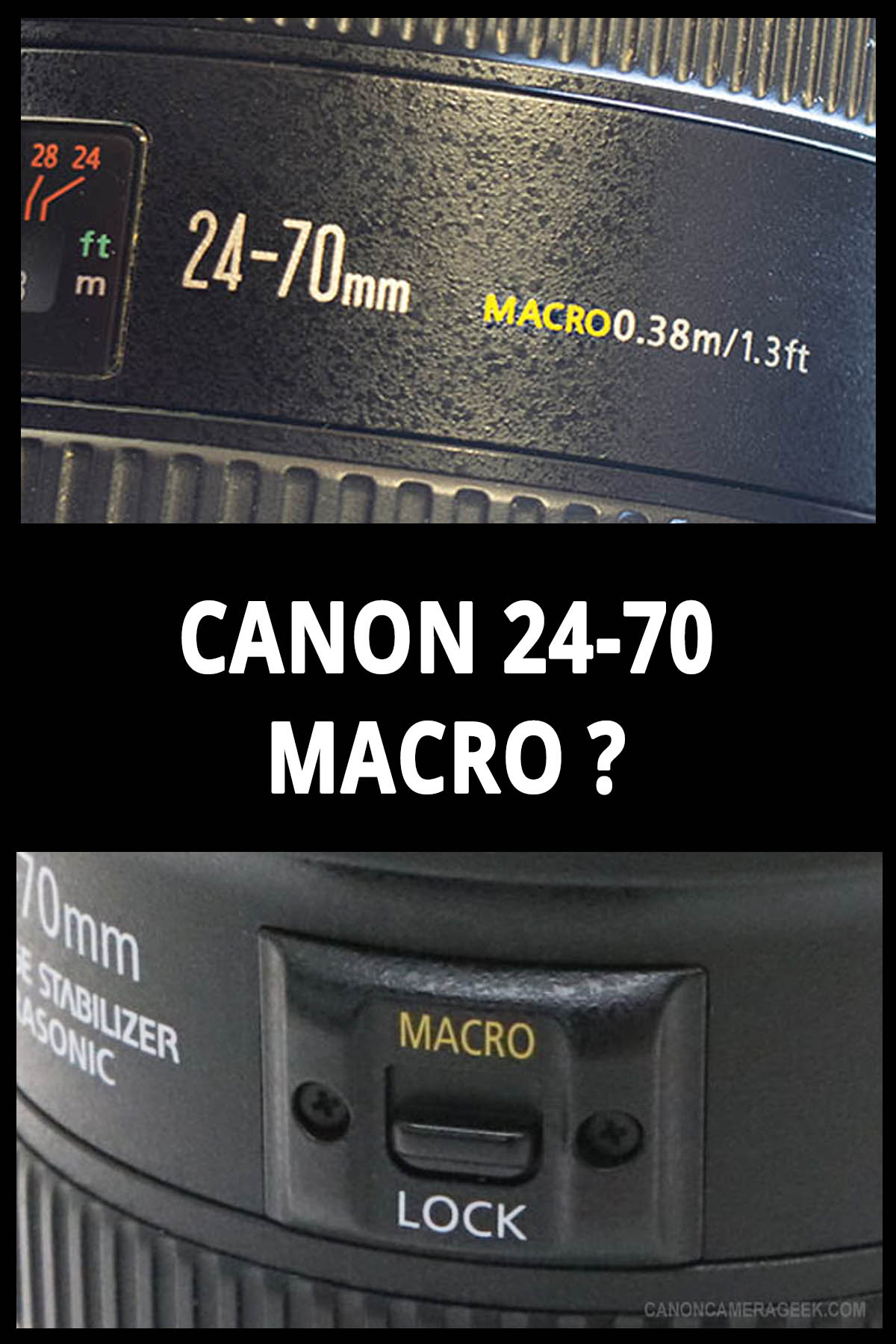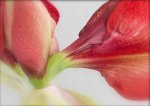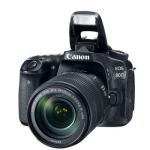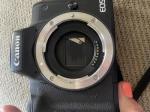Canon 24-70mm Lens and Macro Photography
Any one of the three Canon 24-70mm lenses can be used for macro photography, but the Canon EF 24-70 IS f/4.0 "macro" version has a macro switch to engage the lens into a dedicated macro mode.
This post will help you understand if one of the 24-70mm lenses is right for you to shoot macro photos. The macro mode can be used when the focal length of the Canon EF 24-70mm f/4 L IS zoom lens is set to 70mm.
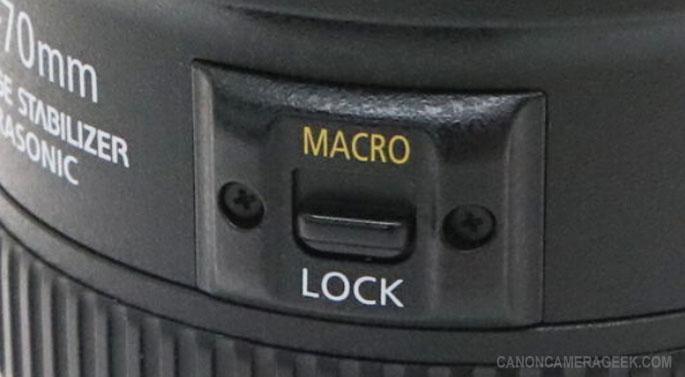 Turn the zoom ring to 70mm,
Turn the zoom ring to 70mm,then slide the switch from LOCK to MACRO
Once you zoom into the 70mm focal length, you can put the lens into macro mode using the macro lock switch on the side of the lens.
macro magnification
You're wondering if you can get good macro photos with the Canon EF 24-70 lens. You can get super close macro photos with either the first or second version of the Canon EF 24-70 f/2.8 by adding one or more extension tubes to your tool kit. We get to that more in a moment.
Alternatively, you can get nice tight macro photos using the Canon EF 24-70mm f/4.0 IS lens when it's in macro mode, even without using extension tubes. See the 24-70 lens magnification table below.
COMPARISON OF MACRO CAPABILITES
| CANON EF f/2.8L USM | CANON EF f/2.8L II USM | CANON EF f/4L IS USM |
| Maximum Magnification .29X | Maximum Magnification .21X | Maximum Magnification .70X |
You can see from the table above that all three 24-70 lenses give decent close-up magnification. When it's put into Macro Mode, the EF 24-70mm f/4.0 has more than double the macro capabilities of the two f/2.8 versions of the 24-70 lenses.
Canon's f/4.0 version of the EF 24-70mm lens is the only Canon general purpose zoom lens that has a dedicated macro mode and the hybrid image stabilization. That image stabilization is specifically designed to minimize blur under the high magnification situation that comes along with shooting macro photography.
canon 24-70mm macro 0.38/1.3ft specs
The 24-70mm macro 0.38 meter/1.3 feet specs are printed on the the side of the 24-70 f/2.8 lens. That translates to a minimum focusing distance to the subject of about 15 inches.
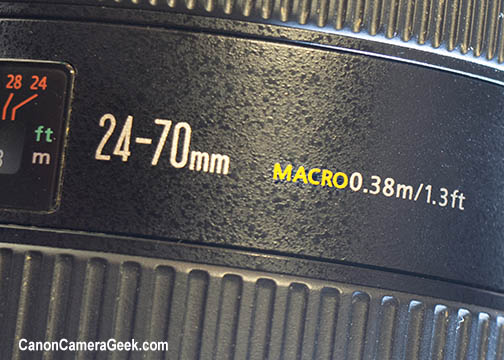 Canon EF 24-70mm f/2.8 Macro Lens
Canon EF 24-70mm f/2.8 Macro LensThat compares with the minimum focusing distance that the 24-70mm f/4.0 macro lens has of about 8 inches. That gives you more than twice the magnification of the 24-70mm f/2.8 lenses.
is the 24-70 f/4 a macro lens?
The f/4.0 version of the three versions for the 24-70mm lens is the most "macro" version of this Canon lens for sure, but check out the sample macro photos I took for this post. I used the Canon EF f/2.8 (version 1) to take these close-ups. This just goes to show you there CAN BE more to macro photography that just shooting insects and flowers with a dedicated macro lens.
Canon 24-70mm macro sample images
This first sample image taken with version one of the 24-70 lens. I used no tripod-that's rare for me-and had my model stare out of a nearby window. Shooting at f/6.3 gave me enough range of sharpness to keep her right eye focused and her left eye appropriately soft to create a feeling of depth.
I used manual focus, set it to the minimum distance on the lens barrel and leaned in and out until I had her right eye in sharp focus.
The great thing about shooting macro with a decent lens is that there are always subjects nearby to photograph up close. Although we often see mundane objects everywhere around us, sometimes it takes a little close-up photography to get our creative juices flowing.
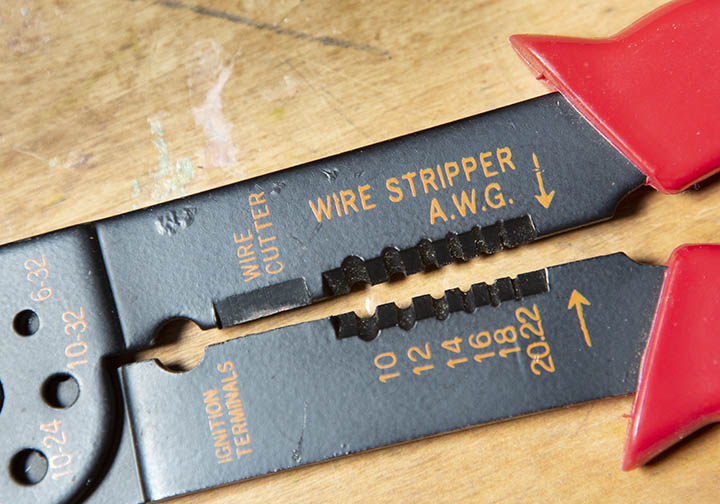 "Wire Stripper"
"Wire Stripper"f/4.0 1/60 second at 70mm focal length
Using one of my favorite light sources for shooting close-ups, a large window, I chose an angle that produced a gradation in the black metal wire cutters from light to dark. That's a great way to create visual interest in your macro images.
Now we'll take a look at getting super close with the NON-macro f/2.8 version of the Canon EF 24-70 lens.
Canon 24-70 Macro photography with extension tubes
You can turn almost any lens, including any one of the three Canon 24-70 lenses into a macro lens by the addition of one or more extension tubes.
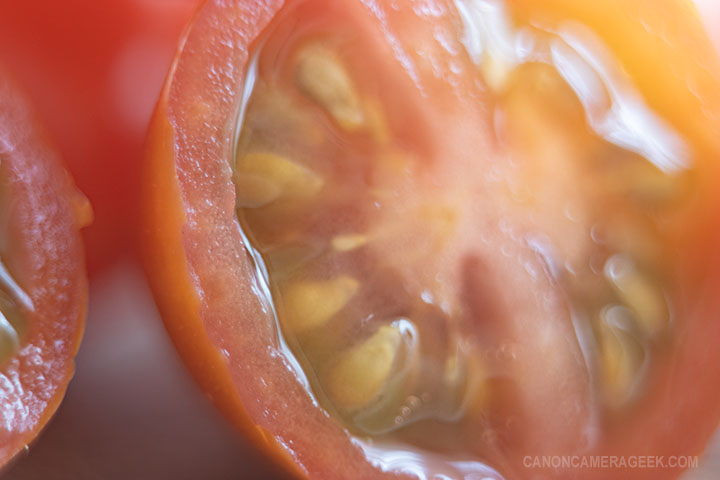 "Cherry Tomato"
"Cherry Tomato"Canon 90D camera, 24-70mm Lens
3 Extension Tubes
I decided against going with one of the genuine Canon extension tubes and still regret it, although only slightly. I purchased a set of three extension tubes made by Opteka.
If you look closely at this photo of my daughter's laptop keyboard, you can see how limited the depth of field is when shooting with the extension tubes/24-70mm combination.
Unique qualities are often revealed when you shoot close-ups. In this case, with the macro photography of this LIFE cereal, the significant presence of sugar was revealed to me.
LIFE cereal is marketed as a low sugar food, but the close-up photo reveals how it looks with sweetener sprayed on it in significant qualities to give it that sweet taste.
24-70mm lens Summary
You can make remarkable macro photos by using a Canon EF 24-70mm lens. Whether you use one of the f/2.8 versions of the 24-70 lens or the Canon EF 24-70mm F/4.0 Macro USM.
Adding one or more extension tubes between your camera body and 24-70 lens will greatly reduce the minimum focusing distance to the subject. If you don't want to mess around with another piece of camera gear the EF 24-70mm f/4 lens is clearly the best choice and also much cheaper than the 24-70mm f/2.8 II.
I hope this post was helpful, For related articles on the 24-70 lenses, see the links below my signature. For other topics on the Canon Geek website, use the search box below.
Have a blast. Shoot a Canon.
Search for articles on this Site:
As an Amazon affiliate Canon Camera Geek receives a small commission from qualifying purchases, at NO added cost to you.

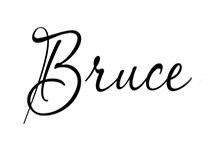
Bruce Lovelace is the publisher of Canon Camera Geek. Read more about him on the About Page. He also publishes how to articles and camera gear reviews at the Photography Tips website.
View some of Bruce's photos on Instagram and Flickr. Join the Tribe: YouTube. Visit the Canon Geek FaceBook Group. Bruce runs photo workshops and provides 1 on 1 digital photography coaching.
Recent Articles
-
Free Download of Stunning Amaryllis Photo. Free Photo of Amaryllis
May 26, 25 06:57 AM
Yours to copy and enjoy. This Free Download of Amaryllis Photo -
Canon 80D FAQ
May 03, 25 04:36 PM
Frequently Asked Questions About The Canon 80D -
Canon EOS m50 error 20 message
Apr 27, 25 09:35 AM
I have a canon eos m50 dslr and my lenses keep giving me an error message error 20 but I don’t know where to take a camera to get repaired anymore? Hi
